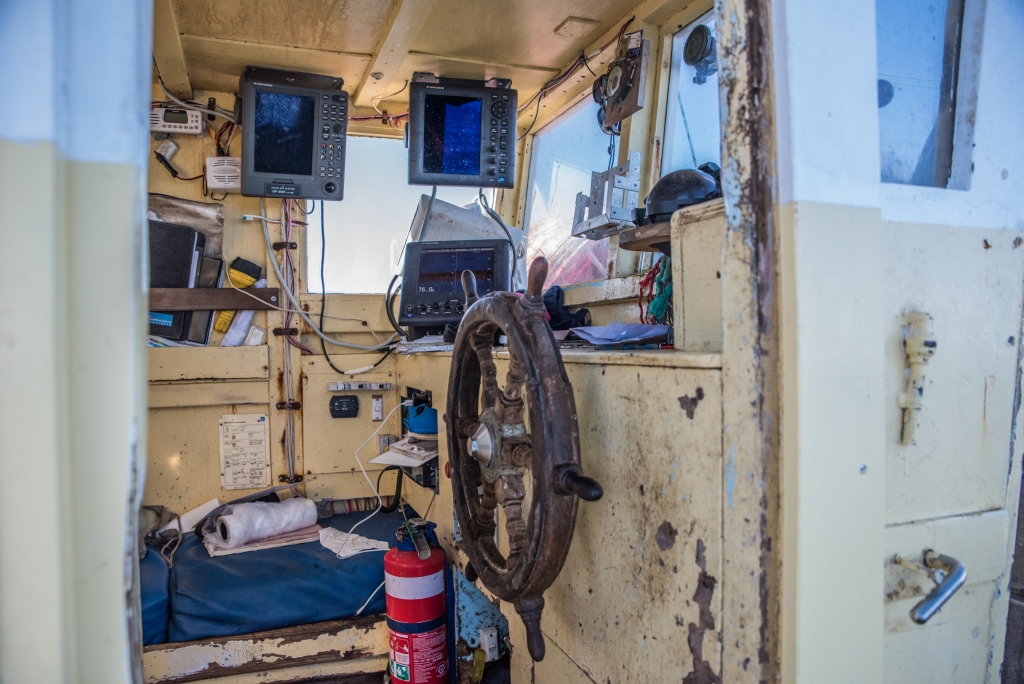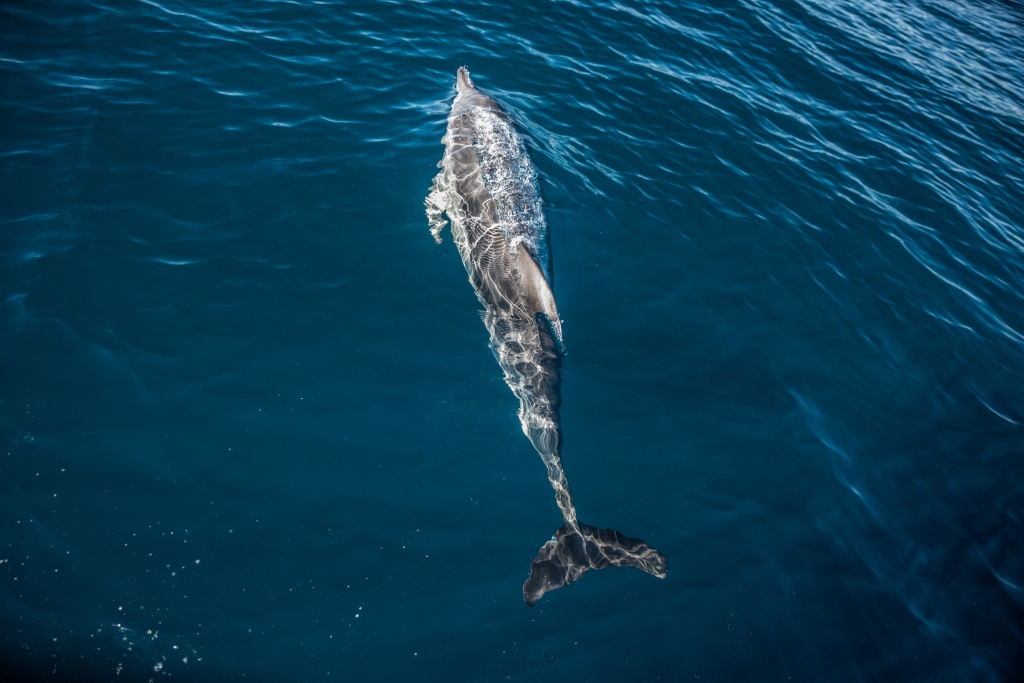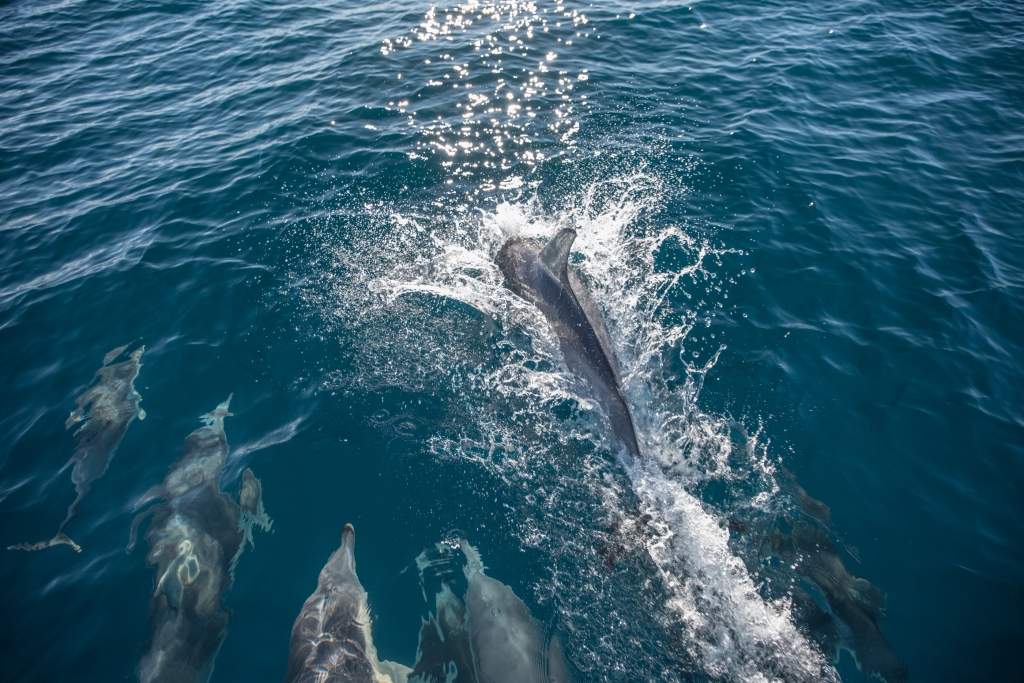At short notice I received an invitation to go on a short trip with a local Apollo Bay professional fisherman on his boat the Karlene-Marie. I said yes.







My initial editorial inclination was that half a dozen dolphin photos would be more than enough on this post. But I didn’t lose interest when I was on the boat after seeing only half a dozen dolphins. I hung over the bow for the full time they were swimming. There were so close to me that I got splashed from time to time. I was taking photos, but mostly I was just watching. I didn’t notice the passing of time at all. They were mesmerising, and I felt it a privilege to see them at such close quarters for so long. So, enjoy the product of my revised editorial inclination which is to share something more than half a dozen photos of the spectacle that held me spellbound for as long as it lasted.



Common dolphins swimming in bow wave of the Karlene-Marie, cray boat, 7-8kms off Apollo Bay

























The lines of this yacht appealed to me as a contrast to the functional beauty of the working fishing boats which surrounded it.
Thanks for the great afternoon Frosty.
Thank you, John, for sharing all those interesting stories and amazing photo shots.
Your make your passion for the ocean very contagious (I wanted to use an adjective with less connotation but didn’t find one as appropriate ;-)) a bit more each time with each posts.
All the best to you. Stay safe and well.
J-P
LikeLiked by 1 person
Thanks J-P. I’m pleased to hear you are enjoying the blog.
Regards,
JL
LikeLike
Good morning Juan, I also love the contrast inside the cabin, paint delaminating and modern electronic equipment.
However I noticed the bubble pattern before reading the notation, beautiful!
LikeLiked by 1 person
Hello Hughbert. Yes, the bubble pattern is very interesting. I’d like to know why it formed. My guess is that as it seemed to happen only when the dolphin was moving through the water at speed, the explanation probably lies in areas of high and low water pressure on the part of his back between the blowhole and the leading edge of the dorsal fin. These areas could be distributed in a way that temporarily traps the single stream of air in a confined area forcing it to loop repeatedly as shown in the photo. I don’t have any formal training in fluid dynamics or indeed any training at all – but enough about me. One last thing: Bernoulli. That’s it. I’m done. Your opinion Hughbert?
The Karlene-Marie is not a new boat and has done a lot of work along the west coast, cray fishing and shark fishing. The cabin seems to have all it needs in terms of controls and equipment, and couldn’t possibly have any more character than it already has.
LikeLike
What a treat John. I can understand why we are mesmerized by them with their grace and poise. No less than so than watching Rudolf Nureyev or Margot Fontyn.
But what do they see in us. What is in it for them to spend such a long time surfing at the front of the boat.
Is it simply curiosity?
Is it the sensation of surfing on the bow wave akin to us body surfing?
Do they think they’ll get a feed?
Do they think we are extraordinarily handsome?
Is it your pheromones?
The above are in descending order of likelihood.
But in all seriousness John has anyone offered a plausible suggestion as to why this actually happens?
LikeLiked by 2 people
I think the behaviour of surfing the bow wave is primarily aimed at getting a free ride. Many creatures are geared to conserve energy when travelling. When you see birds such as gannets, cormorants, pelicans, pacific gulls and albatross flying within half a wingspan height of the ground, they are in ‘ground effect’ which is something known to pilots. At this height, the drag which a wing creates in producing lift is significantly reduced. Similarly coastal birds will often conduct their feeding surveillance flights on the windward side of a vertical obstruction if one exists, such as a cliff, coastal dunes or even a man-made breakwater. By using such rising air they can fly for a long time without flapping their wings at all, unless it is to dive to feed. Migrating birds will use the free ride offered by rising air on waves out in the open ocean to conserve energy on long flights across oceans. .
I imagine that the front of a bow wave (over and just under the water) allows gravity to play a role in their forward motion just as it does for a surfer on a wave, thus conserving energy.
Because they are highly intelligent, survival is pretty much a given, and they seem to me to have great excess time and capacity for social organisation and activity. I think activities which humans might call play are engaged in by dolphins. No doubt such behaviour has evolved for some reason related to survival of the individual and the species.
As for dolphins seeming to demonstrate interest in humans, they have numerous similarities with humans, and when in the sea with dolphins, humans may simply be the lucky recipients of normal inter-dolphin social behaviour. In a post on this blog published March 21 2020 (‘A few things that haven’t changed recently’), I describe an encounter with a small pod of dolphins while I was swimming with four friends at Apollo Bay. They acknowledged us, swam to us, swam close beside and under us, and behaved in a friendly and social manner. We swimmers were the ones who disengaged as we were heading further and further offshore with them. Once again, I think the time they have on their hands because survival is relatively simple for them, has permitted them to develop a sense of curiosity, and an openness to communal living and contact.
This is in contrast to the creature attached to the dorsal fin which glided silently past me while I was swimming 180m offshore on Monday morning…..
LikeLike
What a stunning encounter John.
When the opportunity was offered to you, did the skipper give you a hint as to what you might see? If not, there is serendipity in the spontaneity.
Thanks for the “stills” – they moved for me, with grace and power.
How many solo dolphins have you seen in the wild? To me, they’ve always appeared to love the company of others, including lucky humans.
Cheers
Hunto
LikeLiked by 1 person
What was offered was the trip offshore to set the nets. When dolphins were seen in the distance leaping out of the water ahead of the boat, the skipper said with complete certainty that as soon as we neared them they would surf off the bow. This was not treated as an uncommon event by him. He identified the species, and passed on a lot of very interesting information about their behaviour. But we also saw large numbers of dolphins off both sides of the boat feeding on a huge school of small fish, with a significant number of Australasian gannets plunge diving on the same school. There was obviously plenty for all. The skipper said this was definitely not a common sight, and the deckhand (a very experienced sailor) said he had never seen such a sight. So yes, there was a serendipitous bonus in the spontaneity Hunt. It was a memorable afternoon.
Seeing all these dolphins so soon after I had the unidentified fin swim past me recently, confirmed that the fin I saw wasn’t on a common dolphin. I’ve never seen a solo dolphin in the wild, although I understand they are not unheard of. Another interesting fact is that local beach fishermen have started catching salmon from the beach, in the gutter between the sandbar and the beach. Mako sharks have been identified cruising in that gutter during the salmon season in years past. The fin I saw was not unlike a mako fin. But none of this resolves what it was that cruised past me with its dorsal fin just above the water.
LikeLike